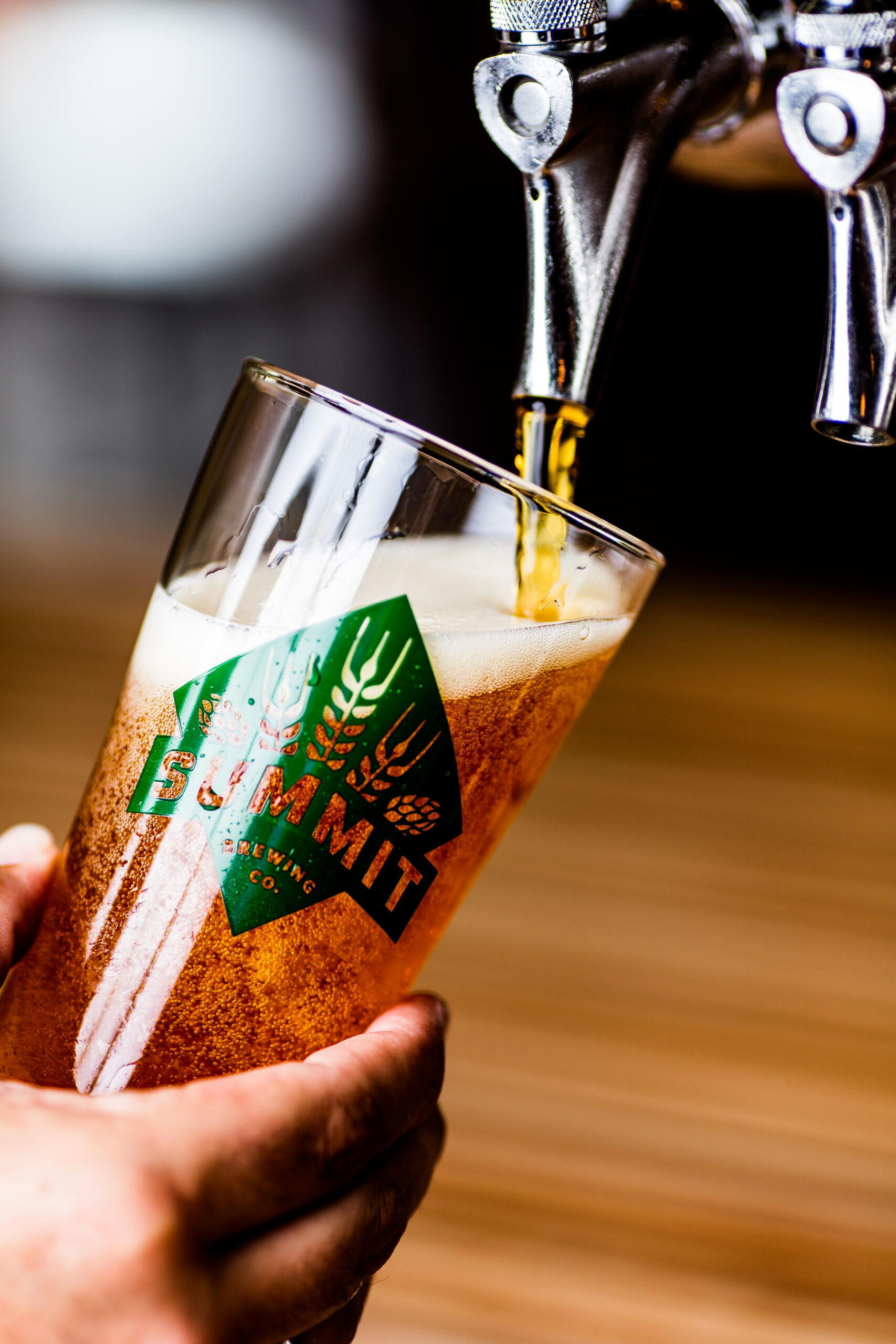A Day in the Life of a Summit Beer
Most everyone knows that all beer starts off as four ingredients: malts, hops, yeast and water.
It’s through our Summit magic that these ingredients come together to be one of our delicious beers!
Today, we’re giving you a glimpse behind the curtain.

Our Summit beer starts its journey in the Summit brewhouse as malt.
We receive the majority of our malt from Rahr Malting Co., located in Shakopee, Minn. We also purchase some specialty malts from the UK, Germany and Belgium. For a beer like Summit Extra Pale Ale the malt we use includes 2-Row Pale Malt and Crystal Malt. These malts are milled on-site — a process in which we run the malt through our six-roller mill that crushes it, separating the outer layers and creating a crushed grain known as grist.
 Things heat up for our Summit beer as it moves to the mash tun and lauter tun.
Things heat up for our Summit beer as it moves to the mash tun and lauter tun.
The grist then moves in to the mashing phase. This is where the second ingredient comes in — water! The grist is infused in hot water to convert the starches from the malt to fermentable sugars. (Spoiler, this is what the yeast will eat later to help produce alcohol and CO2.) For EPA, and all of our beers, we use City of St. Paul water which is some of the best around. And don’t just take our word for it! A panel of experts recently voted it the best in the state. When it comes to brewing, its especially great because of its specific pH makeup and mineral content.
After mashing comes lautering. The translation of lauter is “volume up,” which make sense for this phase as it’s when our mash levels up to wort. Wort, the hot, sweet liquid, is separated from the solid grains in the lauter tun. This is one of the two copper structures guests can see from our Ratskeller Beer Hall. The solids left behind are called “spent-grain” and are picked up weekly and converted into animal feed.
 A journey to the copper kettle is now in store for our hot, hot Summit beer.
A journey to the copper kettle is now in store for our hot, hot Summit beer.
The wort is now moved into our German copper kettle, the other copper structure guests see from the Ratskeller Beer Hall, and boiled. This step sterilizes the wort and we also welcome in our third ingredient — hops. During the boiling, hops are added in for bitterness and aroma. For EPA, we use Goldings, Fuggle, Cascade and Pilgrim varieties.
 Time for a dip in the whirlpool.
Time for a dip in the whirlpool.
Now the hot wort is pumped into the whirlpool. During the whirlpool process, spent hops and unwanted proteins are spun out. Some aroma hops are added at this stage just after boiling to release the delicate hop oils without boiling them away.
 Our Summit beer then decides to cool things down in the fermenter.
Our Summit beer then decides to cool things down in the fermenter.
Next, it’s time for fermentation. The hot wort exits the whirlpool and is cooled down to fermentation temperature through the heat exchanger — around 72° for EPA. This is where our final ingredient, yeast, finally makes an appearance. Specially curated yeast strains will be added to the liquid to truly bring the beer to life. The yeast will ferment the sugars and produce alcohol and CO2. Here at Summit, we naturally carbonate all of our beers, so much of CO2 you experience when you drink our brews is from this yeast! For EPA we use an Ale yeast strain. For our beers with a strong hop aroma we also add hops to our fermentation vessels, a process known as dry-hopping.
 After 2 – 4 weeks our ale is ready to clean-up.
After 2 – 4 weeks our ale is ready to clean-up.
For EPA specifically, the whole process takes about 21 days. It will ferment for 5 – 7 days and then age for 14 more. For lagers, such as our Summit Oktoberfest, this process can take up to 90 days.
Then it’s time for separation and filtration. Our beer, as it is now truly a beer, moves through what is called a centrifuge. This machine helps remove any solids left from the hops, yeast or other ingredients. It helps brighten the beer for the brilliant clarity most all of our beers possess. Those that require complete transparency are passed through a polishing filter for one final clean-up. EPA will move through both the centrifuge and polishing filter to achieve its signature amber brilliance.
Now, our Summit beer can fulfill its purpose and be enjoyed.
Finally, our beer is ready to be enjoyed! Now fully in EPA form, we package the beer in kegs, cans or bottles for your consumption.
So, next time you raise a glass of Summit beer you can recall just how much of a journey this liquid took to make it to your glass.


